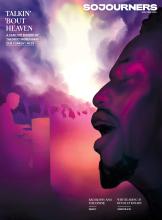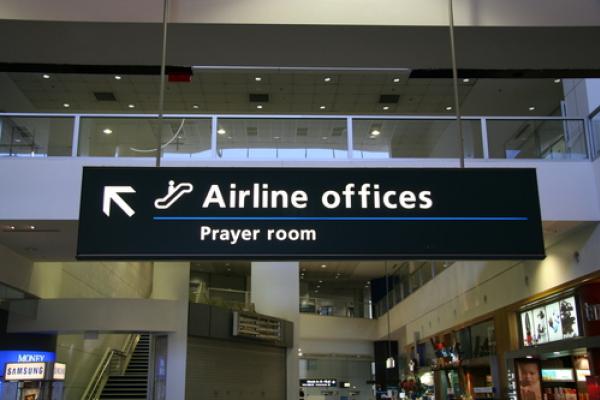The San Francisco International Airport has a yoga room, but no chapel. At least that’s what it looked like, when I was there a couple of weeks ago at six o’clock in the morning: The Yoga Room was obviously a point of pride, with extensive signage along the concourse, but there was no indication that there might be other kinds of religious — excuse me, spiritual — spaces.
It turns out that SFO does, in fact, have a chapel, though it is tucked away in the International Terminal, and is known as “The Berman Reflection Room,” which, as an entry on IFly.com cites, “provides a center for quite self-reflection and meditation.”
Assorted photographs from Flickr, if they can be trusted, depict the space as not much different than an airport gate, with carpet, lines of chairs and window-walls of glass, plus what appears to be a vestigial Chuppah-type structure, and some potted plants. (The website for a group called the Interfaith Center at the Presidio, incidentally, laments that it was asked to raise funds for the Berman Reflection Room, but not allowed to conduct any “programming” there.)
If the cliché that all trends move eastward from California stands, then the idea of airport chapels and other incidental religious spaces would appear to be in eclipse.
Which would be too bad, for I’ve always loved sighting the airport-chapel logo out of the corner of my eye, skidding my beat-up suitcase across the concourse, and entering a hushed space of—well, exactly what?
Read the Full Article

